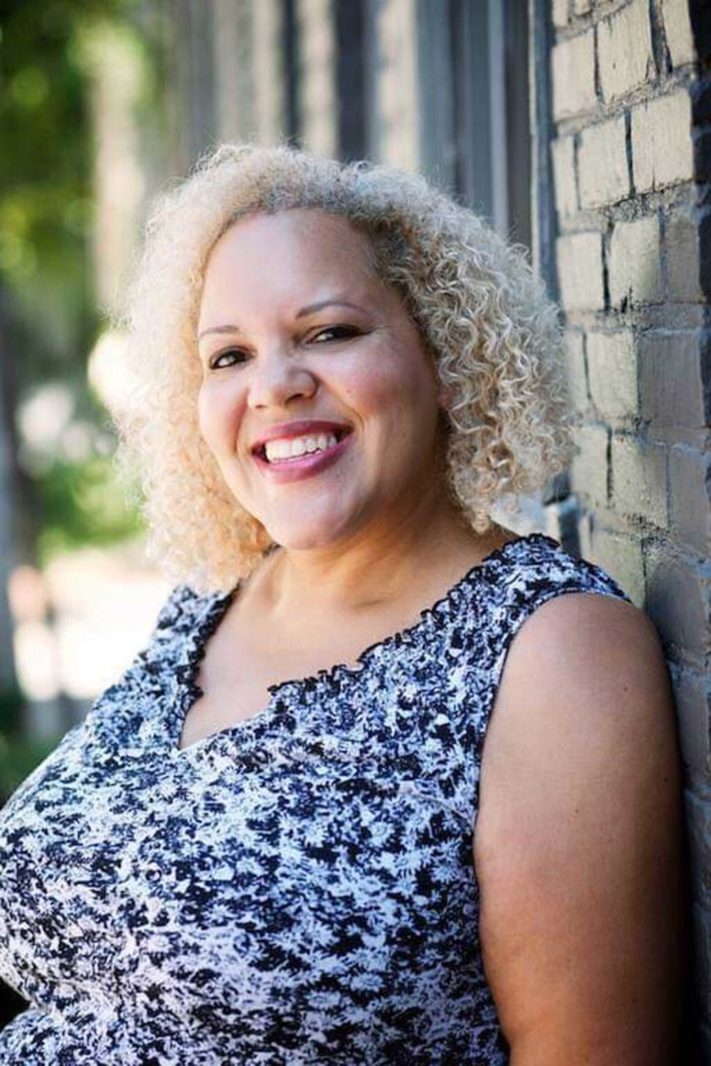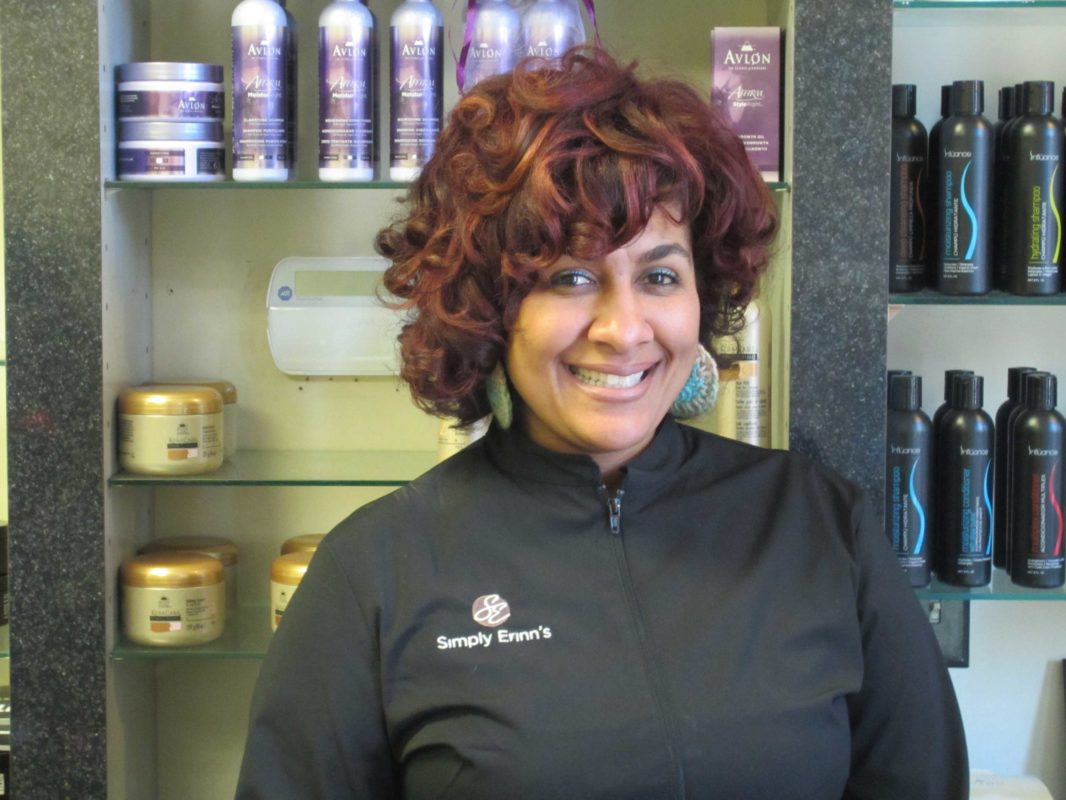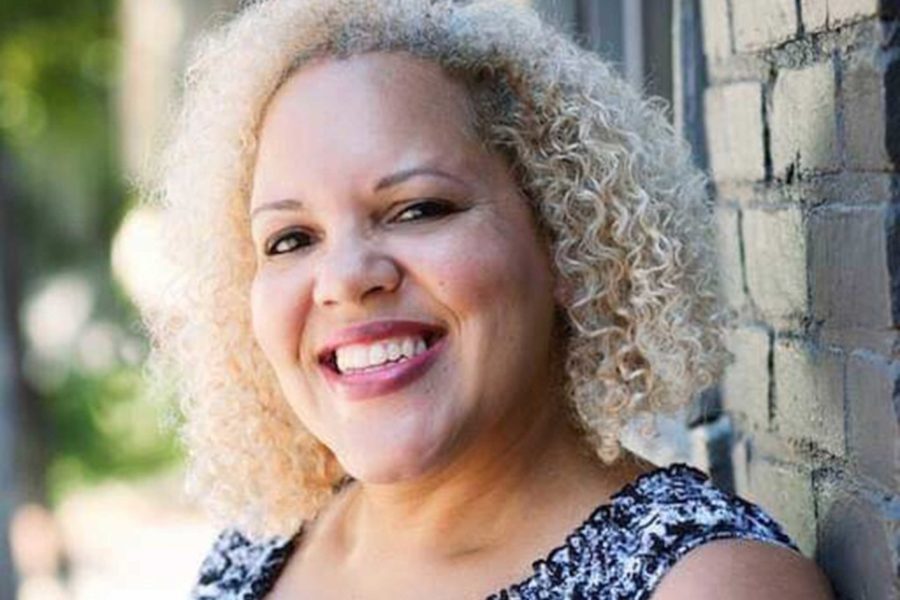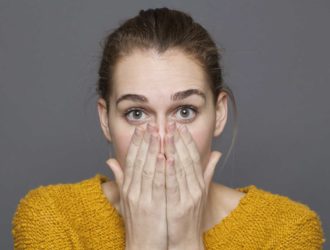Anxiety is the most common mental illness and strikes women twice as often as men. While the stigma of mental illness still looms large in this country, these brave women stepped up, reached out, and opened up to Exhale. Their anxiety is not eliminated, but they now have the tools and power to limit its effect.
Michelle Phoenix, Somerville, MA
Generalized Anxiety Disorder

Photo courtesy of Michelle Phoenix
Michelle Phoenix experienced bullying in her youth and has lived with generalized anxiety disorder most of her life
Michelle Phoenix’s early school years were not happy ones. She had to juggle reading and arithmetic with bullying—not only from fellow students but also from teachers as well.
Unfortunately, the bullying won out. “I believed everything they said,” she explains. “I thought I was crazy.” Phoenix experienced what 28 percent of U.S. students in grades 6 to 12 endure on a regular basis.
She coped by avoidance. She’d complain of feeling too sick to go to school. Nausea and shakiness got the better of her, but mostly fear. Avoidance is a common solution for anxiety, but it exacerbates rather than solves the problem.
Fortunately, Phoenix had an ally in her mother, who told her the things people were saying were not true. More importantly, her mom recognized the seriousness of the situation and found a therapist for her daughter.
But talk therapy does not always work initially. By middle school, Phoenix developed another coping tool: She began to drink. That’s not surprising. Alcohol has a sedative effect. It might make you feel better, but the sedation is transient.
The impact of bullying, however, can have a lasting impact. Research suggests that there is a link to anxiety. Bullied kids are more prone to panic attacks, generalized anxiety disorder, and PTSD, for example. Phoenix did not escape this aftermath.
She became fearful and a worrier. “I was afraid of everything all the time,” she explains. “I could have received a gold medal in worrying.” She jokes that her first words were “oh, dear.” She had trouble relaxing, and sleep was elusive.
Here’s the good news: Phoenix can now put a face to the symptoms she has experienced for most of her 52 years. She sought treatment and was diagnosed with free-floating anxiety, another name for generalized anxiety disorder, or GAD.
Free-floating is so called because no particular event causes the stress, making it more difficult to predict and ward off. She avoids situations, however, that could cause anxiety. TV news is out. Why risk exposure to murders, child abuse, and other unpleasant incidents? The Kavanaugh debates were off limits, she explains.
It is possible that her diagnosis of GAD coexists with panic disorder. It is common for a person to suffer from more than one anxiety at the same time. Her attacks occur out of the blue. For instance, she was sound asleep the other night when she suddenly bolted upright, heart pounding. “I was terrified,” she explains. Yet, she could not identify the cause.
Phoenix now has helpful tools to manage her condition. She takes medicine every day and sees a therapist every week. She credits cognitive behavior therapy, or CBT, for her improvement. CBT has given her the ability to not only recognize the symptoms of anxiety but also control them. She practices deep breathing and mindfulness, which help slow down her heart rate and calm her mind.
But even more significant is a change in her attitude and approach to her condition. “It’s OK to have anxiety,” she explains. “It’s just a brain function. It doesn’t make you stupid.”
She is no longer ashamed of her GAD and encourages others with anxiety to not be so consumed by the disorder.
“Give yourself a break,” she says.
Whitney Mooney, Waltham
Social Anxiety

Photo courtesy of Whitney Mooney
Whitney Mooney has learned techniques for dealing with her social anxiety
Whitney Mooney admits she was always a shy kid. She had a hard time trying to make friends. Social events were not high on her list of favorite things to do. She said she never questioned this behavior and assumed that’s how it was with everyone.
But it was her sophomore year in college that finally brought her anxiety to the forefront. Too many stressors came her way at once. Her personal relationships faltered; home issues were strained. Mooney had an internship that necessitated interaction with others. “I couldn’t socialize,” she explains. “It was a hurdle just going to work. I couldn’t go to the lunch room without crying.”
She was 20 years old at the time.
It was actually her dad who steered her to help. He suffered from depression and recognized the symptoms. After detailed testing, the doctor diagnosed Mooney with social anxiety and depression. That’s not unusual. Nearly one half of those diagnosed with depression are also diagnosed with an anxiety disorder, according to the Anxiety and Depression Association of America.
The doctor placed her on antidepressants, a common treatment for both disorders.
Things were going OK until she graduated college. Moving was the trigger, and Mooney does not do well with change. “I really freak out,” she explains. Mooney was dealing with a new city, a new job, and personal problems—all at the same time.
The symptoms can be overwhelming. She becomes short of breath, feels pressure on her chest, and is unable to focus on anything. “I space out and have an overwhelming urge to cry,” she says. “I spiral. I take [a comment] to a level that makes zero sense.” For instance, if someone mentioned she was too loud, she feared it would cause the loss of all her friends.
Mooney found a new doctor who confirmed her diagnosis and increased her medication. But she also made a change that began to turn the tide for her.
Her doctor added a new treatment: yoga.
According to Harvard Mental Health Letter, studies suggest that yoga can reduce the impact of stress responses, making it helpful for both anxiety and depression. “Medication can help just so much,” Mooney explains. “It’s not a miracle drug. I still have bad days.” But the addition of meditation, breathing activities, running, and just plain walking helps keep her in sync.
Mooney made an introspective analysis to pinpoint the source of her attacks. She attributed them to her hours spent volunteering, babysitting, and a number of other activities. “I was so emotionally and physically drained,” she says. Mooney cut down on social events that triggered anxiety.
It has taken her years, but she says she is on the right track now. She compiled a list of things that make her happy and a list of triggers, and asked herself questions. “What can go? What don’t I need?” More importantly, she takes time for herself. “I love quiet time,” she admits.
But Mooney prides herself on one of her best achievements. “I learned to say no,” she says.
Erinn Pearson, Cambridge, MA
Obsessive-Compulsive Disorder

Photo courtesy of Errin Pearson
Erinn Pearson has found ways to cope with the unwanted thoughts that can come with obsessive-compulsive disorder
Erinn Pearson, the owner of Simply Erinn’s Unisex Hair Salon in Cambridge, has a unique philosophy. Everyone gets a personal welcome at the door, and when you leave her beauty parlor, she wants to make sure you not only look better but also feel better. “We want to give them a taste of Cambridge,” she explains.
Pearson has a quick and hearty laugh. Her clients are surprised when they learn she has anxiety. But she has for most of her 48 years.
She thinks the root of her problem began around the age of nine, following an emotional trauma when she witnessed a neighbor being wheeled from her home after a 911 call. “Something about that really scared me,” she says. Trauma often lays the groundwork for anxiety.
In her 20s, her symptoms emerged as aggressive, unwanted thoughts about harming herself or others. Highway driving seemed to precipitate the obsession. She says her breathing increased and she was overwhelmed by thoughts of deliberately turning into other cars.
According to the Mayo Clinic, obsessive-compulsive disorder, or OCD, is characterized by repeated, persistent, and unwanted thoughts or images that cause distress or anxiety and interfere with one’s daily life.
Pearson’s solution was to stay off highways and keep to neighborhood streets where cars are less plentiful.
She eventually chose the T as her major source of transportation, but that only precipitated another obsession. She’d wait until the train was approaching and rush through the turnstiles to board. This maneuver helped her avoid prolonged exposure to the platform and the obsession to jump on the tracks in front of the approaching train.
When embarking, if the car stopped too far from the exit, she would make a beeline to the stairs or wedge herself between commuters to prevent coming too close to the platform and train.
“I could not control my thinking,” she admits. “You create your own thoughts. They keep you a prisoner.”
As is often the case, Pearson’s anxiety was coupled with depression. Both left her feeling hopeless at times. She eventually sought help and readily embraced cognitive behavior therapy, but was slower to take medication. “I thought I wouldn’t be me,” she explains. Yet, medication combined with group therapy and sessions with a psychologist who specialized in the treatment of OCD offered her solutions.
Now Pearson relies more on self-help and the support of friends than medicine. She is her own therapist, of sorts. She practices deep breathing and meditation. She does not fight intrusive thoughts. “Are they real or am I making them up?,” she questions. Regardless, she lets them run their course. “If I am still,” she explains, “they’ll eventually leave.”
Pearson says she understands why people turn to alcohol and drugs. “They want to feel better but don’t want to be seen as having a mental health problem,” she adds.
That’s not a solution, however. “Now they are anxious, depressed, and an addict,” she says.
Understanding Four of the Most Common Anxiety Disorders
May is #MentalHealthAwareness Month
Anxiety: When It’s Time to Worry
Anxiety is not always a bad thing. It can be a strong motivator and help people meet deadlines and athletes perform better under pressure. It can also be lifesaving and trigger the body’s “fight or flight” response, saving you from an untoward event. Sometimes, however, the anxiety lingers—even when the source of concern has passed. At times the anxiety appears when there is no visible threat. When it persists for a period of time and begins to impede one’s normal daily activities, in all probability it has moved from an annoying tendency to an anxiety disorder.



 8 min read
8 min read





